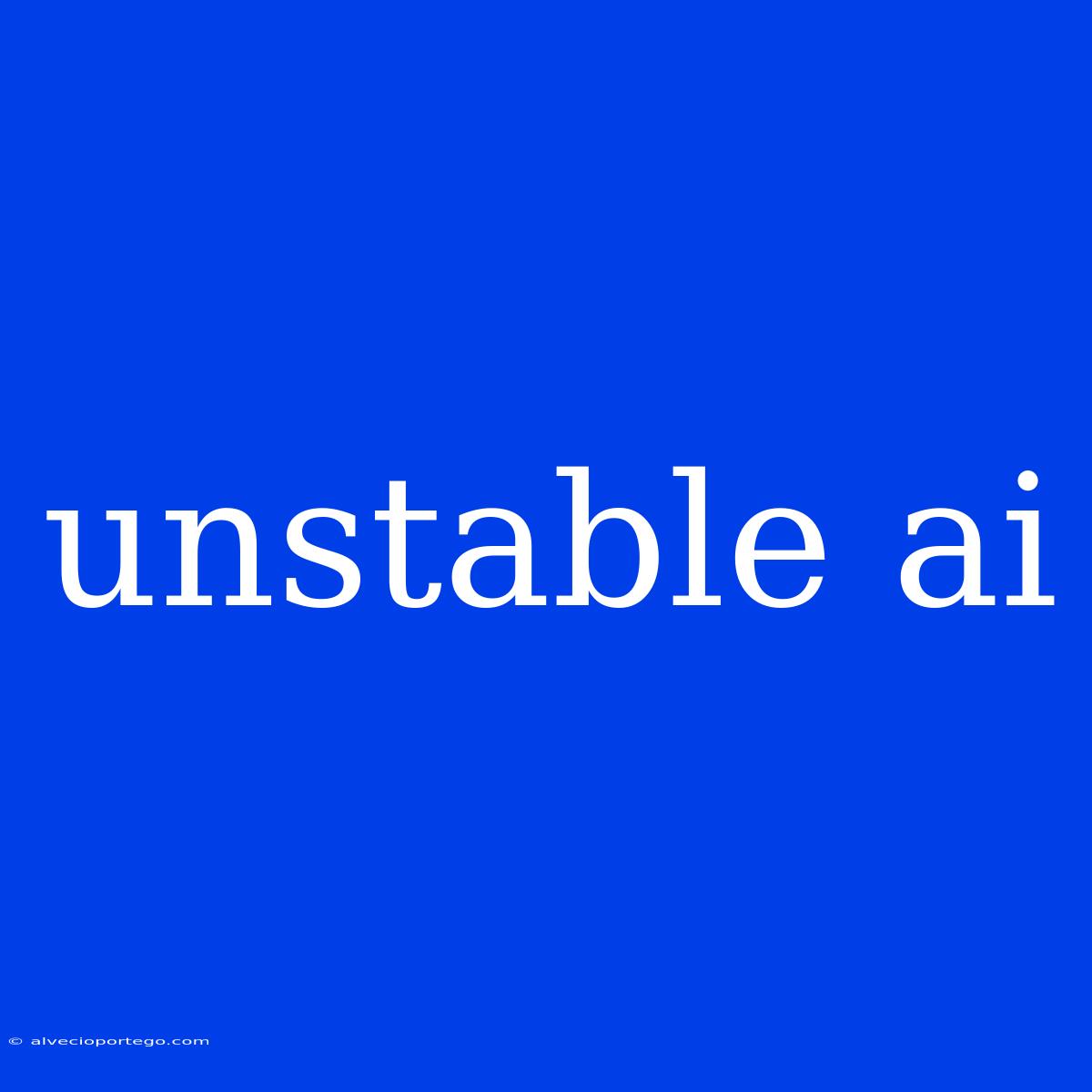The Unstable Nature of AI: A Look into the Challenges and Potential
Artificial intelligence (AI) is rapidly evolving, promising to revolutionize various industries and aspects of our lives. However, despite the exciting advancements, AI is not without its flaws. One of the most significant concerns is instability, a characteristic that can lead to unpredictable and sometimes harmful outcomes.
What is AI Instability?
AI instability refers to the tendency of AI systems to exhibit erratic or inconsistent behavior, often due to:
- Data Bias: Training data used to build AI models can be biased, leading to discriminatory or inaccurate outputs.
- Overfitting: When a model learns the training data too well, it fails to generalize to new, unseen data, leading to unstable performance.
- Adversarial Examples: Malicious inputs designed to fool AI systems can cause unexpected and often detrimental results.
- Lack of Robustness: AI systems can be susceptible to noise, variations in data, and changes in the environment, resulting in unpredictable behavior.
The Impact of AI Instability
AI instability can have serious consequences:
- Unreliable Decision Making: In critical applications like healthcare, finance, and self-driving cars, unstable AI systems can lead to flawed decisions with potentially life-threatening consequences.
- Security Risks: Unstable AI systems can be exploited by attackers to manipulate or compromise critical infrastructure.
- Ethical Concerns: Unpredictable behavior in AI systems can raise ethical concerns, particularly when it involves bias or discrimination.
- Lack of Trust: Instability can erode public trust in AI technologies, hindering their widespread adoption.
Addressing AI Instability
While AI instability poses significant challenges, research and development are actively working towards mitigating these risks:
- Data Quality and Bias Mitigation: Efforts are underway to develop methods for identifying and addressing bias in training data.
- Robustness Testing: Rigorous testing and evaluation procedures are being implemented to assess the stability and robustness of AI systems.
- Adversarial Machine Learning: Researchers are developing techniques to identify and defend against adversarial attacks targeting AI systems.
- Explainable AI (XAI): This field aims to create AI systems that can explain their reasoning and decisions, enhancing transparency and trust.
A Path Forward
The development of stable and reliable AI is crucial for realizing the full potential of this transformative technology. It requires a collaborative effort from researchers, developers, and policymakers to address the challenges of instability, ensuring that AI systems are safe, reliable, and beneficial to society.
While AI instability remains a concern, ongoing research and development efforts offer hope for a future where AI is not only powerful but also stable and trustworthy.

